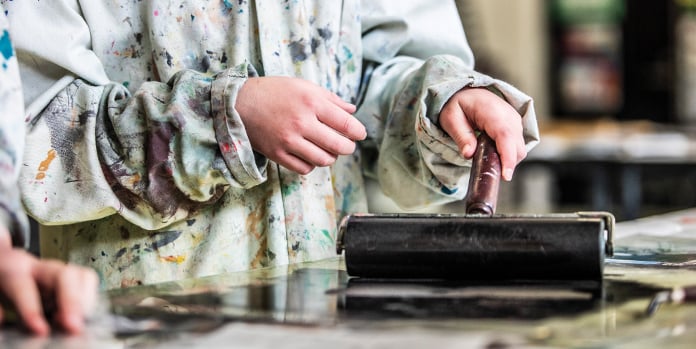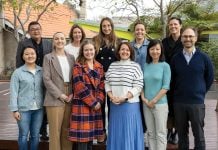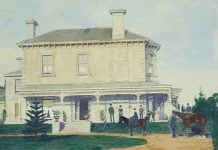At Grimwade House, our Upper Primary art classes extended their printmaking practice to include age-old printing press techniques, resulting in new discoveries and more opportunities for self-directed learning.
“Alongside building digital literacy through using ICT in the Studio, it’s important for students understand where our artistic practices have come from,” says Grimwade House Art Teacher Loz Verde. “By using traditional Art-making methods such as our new printing press, and trying out hand printing techniques, students become kinaesthetically engaged in their learning. We’re seeing how this promotes both curiosity and a deeper investment in what they create.”
The power of student-led discovery
Across Years 4 to 6, Grimwade House students are learning various types of printmaking practices: relief printing and intaglio. While relief printing involves carving away at a material, such as lino or wood, to create an image that can be transferred onto a surface, the intaglio process creates an image by etching or scoring, allowing ink to penetrate those impressions, then transferring that ink onto another surface.
“These are powerful tools for our young artists,” says Loz. “They can now not only envision an outcome, but compare the effects of different materials, then extend on what they’ve learned. It’s been wonderful to see the amazement on their faces as an image starts to emerge.”
“Seeing our Upper Primary students lead their own learning through this curiosity has been a highlight for me,” Loz adds. “The students are now running demonstrations for their peers and sharing their discoveries with each other, which becomes another extension of their learning.”
How mistakes create learning possibilities
Loz explains that today, pedagogical research suggests that there are times when it is appropriate to omit explicit modelling and outcome-directed tasks in favour of allowing time for experimentation.
“Printmaking builds gross and fine motor skills, as well as holistic thinking skills. In bringing artworks to fruition, students further develop critical, divergent, and sequential thinking – essentially thinking like an engineer,” Loz explains. “At the same time, the nature of printmaking means it’s necessary to make mistakes in order to learn. As in any learning journey, the mistakes are as important as the successes.”
“When the children are engaging in creative practices, I don’t touch their work,” Ms Verde adds. “My role is to facilitate their growth, development, and expression of thoughts and understandings. This is about their discoveries in everything from learning how much pressure to use when printing, to how they will communicate their ideas artistically.”
Collaborative pieces are next on the agenda for our Grimwade House artists, with our Year 6 students working towards a large-scale printed work to be displayed at their graduation.
“This is an opportunity for students to celebrate what they’ve learned and their time in the Art Studio,” Loz says. “I think it’s very special that, within a primary school, we have the resources to create these kinds of artworks, and I want to share that with our community.”
In sharing and navigating the use of the printing press, children are continuing to build their capacity to work positively and productively in groups as well as expanding their problem-solving and interpersonal skills.



